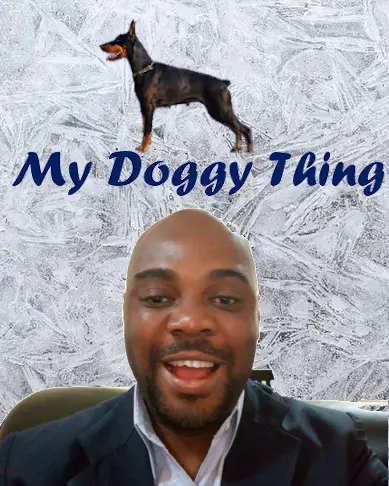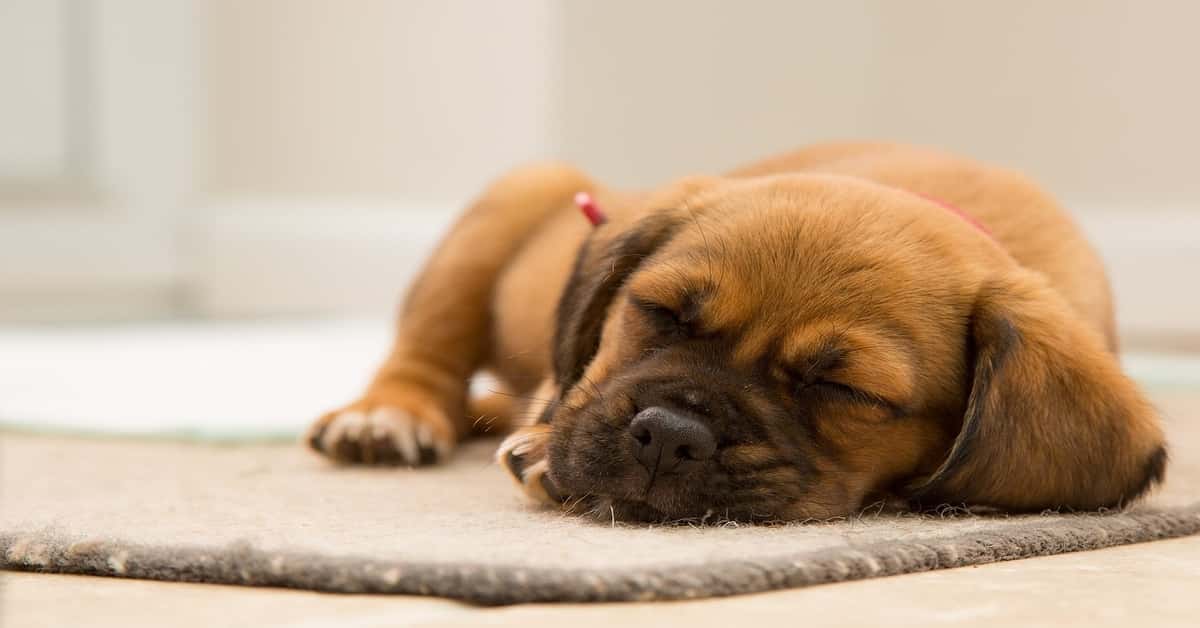Most people who see dogs whimper in their sleep tend to find it amusing, their shaking and whining in their sleep is a thing of entertainment for them. For us dog parents we tend to take these events more seriously. We have more feelings for our dogs and tend to see everything that happens to them from the perspective of a loving parent hence our concern. So what is happening to our dogs? are they like us?
Is there anything we can do to help them?
To answer the question, why does my dog whimper in his sleep? The answer is quite simple, your dog is dreaming, the dream is probably something that he or she has experienced during the course of the day and they are just reliving that experience.
Before we move in it is important for you to know that whimpering is not the only way in which dogs express themselves while they are asleep. There are two ways in which dogs express themselves while asleep and that is by physical expression and vocal expressions.
To understand this situation more, you should understand what happens to our dogs when they fall asleep.
Understanding the sleep cycle of a dog.
Any person who owns a dog knows that they sleep a lot. This is not because of laziness but because they actually need this sleep. On a good day, a dog can sleep between 12 to 14 hours. This would vary for puppies and older dogs.
Dogs usually experience two phases of a sleeping cycle. The first is the slow-wave phase and the second is the REM phase. These phases are quite similar to the human sleep cycle. The slow-wave phase starts immediately after your dog falls asleep, this lasts for about 10 to 20 minutes followed by the REM phase. At this stage, your dog would be deep in sleep and this is where they start to whimper.
The REM phase can last from 30 to 45 minutes all dependent on the age of the dog and its size. A larger dog tends to have longer dreams than a smaller dog. At this stage of the sleep cycle, your dog can express himself or herself both physically and vocally.
Do our dogs actually dream?
The simple answer is yes our dogs do have dreams, although we cannot state for sure what they dream about, the sensible possibility is that they are dreaming about doggy things. If they have the same sleep cycle as humans, then there is a huge possibility that their dreams are tied to their activity during the day.
Also just as humans, our dogs do not need to be disturbed while they sleep. Good sleep helps our dogs to maintain a good mental health state. If your dog is having a nightmare, waking them up at that moment can be dangerous to you as they can end up scratching or biting you. The American Kennel Club advises that we should “let sleeping dogs lie” but in situations where you feel it is important to wake your dog up, the American Kennel Club advises that the best approach would be to call the dog’s name gently till they wake up on their own. If after they wake up, your dog shows signs that he or she wants to go back to sleep, then you can soothe and pet them till they do so.
Things that show your dog might be dreaming.
The first thing is that your dog can only dream when they enter the REM phase. The signs that your dog is dreaming is expressed in two ways. The physical expressions and the vocal expressions.
Things that show your dog may sleeping physically are i.) their eyes moving back and forth behind their eyelids ii.) Twitching of their whiskers iii.) trembling or rapid kicking of their legs and iv.) Irregular deep breaths.
A quick note: all these things do not need to occur at the same time. A few of these physical expressions can occur individually or in pairs.
Now for the vocal expression, there can be very extensive ways of expressing themselves. Bear in mind that the vocal expressions can also be used while they are wide awake but each would carry the same meaning whether expressed in the dream state on when fully awake.
1.Whimpering in their dream.
Your dog whimpering in their dream is a sign that they are re-living something that scared them, or caused them some discomfort or pain. This is common in puppies as a way of vocalizing when they need attention. Most of the time, a casual and gentle call out to them helps them to relax and get over the perceived discomfort.
2.Grunting in their dream.
This is a low noise emitted from the gut that is usually associated with satisfaction. Our dogs giving a one-time grunt in their dream state can mean that they are getting some form of relief, joy, contentment, or serenity in the experience they are re-living.
A note of warming, continuous grunting in the dream state is a sign of physical pain, discomfort, or sickness, and needs to be addressed immediately.
3.Growling in their dream
This is one of those expressions that can be easily misinterpreted, growling in dogs has always been associated with aggressive behavior but this is not true. Our dogs when they don’t understand what is happening around them, or in anticipation of a certain level of discomfort they are going to feel.
Taking this sentiment into the dream world, they might be growling because of a dream they are not interpreting properly in the doggy world.
4.Howling in their dream.
Your dog might howl once in a while in the dream state. Howling is one of those strong ancestral instincts handed down to every dog. More the same way we as humans experience involuntary actions in our body. Our dogs howl either to alert other dogs of their position or to tell them to keep off that this is their territory.
When a dog howls in the dream state, the same interpretation applies, he or she may be alerting you to come to them in the house based on what they are dreaming of. They might also be telling other dogs in the dream to keep off their turf.
5.Barking in their dream.
This is that form of communication that everybody knows about. Everyone who has met a dog knows they bark. The challenge with barking is that it represents a whole lot of things. From alerting you of a perceived potential danger to requesting treats, from greeting you at home to expressing anger or fear, from playing with you to fighting other dogs or animals. This form of communication cannot be singled down to one thing, and since we don’t know what exactly they are dreaming about, the same interpretation would apply to this.
There are other vocal expressions that our dogs can do in the dream state but they do not necessarily have a link to what they are dreaming about. In most cases, they may have to do with the dog’s health status or natural state of being. These vocal expressions are:
1.Snoring in their sleep.
For some, this can be cute, for others it may be annoying and even a thing of concern. As you can easily see, snoring does not have any connection to a dog’s dream state, rather it has more to do with your dog’s genetics, allergic reactions, or sleeping positions.
Dog breeds like English bulldogs and pugs are naturally predisposed to snoring.
If the snoring comes together with weight gain, sleep apnea, or some other breathing health condition, then you should get in contact with your vet doctor immediately.
2.Sneezing in their sleep.
Sneezing once in a while is not something that should cause a major concern for dog parents. This is a natural way of clearing the nasal airway for breathing to continue normally.
But when you have a dog repeatedly sneezing, it could be an indication of a more serious problem like canine influenza, inflammation of the nasal passageway, a tumor, or worse. A visit to your vet doctor is recommended here.
3.Coughing in their sleep.
This is a normal reaction, and can also help to clear our dog’s airways.
As with the other vocal expressions, a persistent cough can be an indication of a more serious problem like heart disease, lung problems, fungal infection, congestive heart failure, heartworms, etc. As with the above, visit your vet doctor immediately to find a solution for the problem.
More serious dog dream state problem are:
1.REM behavior disorder
This is a rare disorder but is very much real in dogs. If your dog makes weird noises when sleeping continuously, then your dog could be suffering from REM behavior disorder.
What is the REM behavior disorder? This is a disorder that makes a puppy or dog believe that what they are experiencing in the dream state is real. For example, your dog might be playing with another dog in the REM state. This makes them want to move their body as they would normally when awake. As they try to act out the dream they are experiencing, their body moves in a disoriented fashion and if not quickly control, they can end up hurting themselves.
Remember the American Kennel Club guideline for this: call out gently to your dog till they wake up on their own, then console and pet them. You know that feeling when you are experiencing everything you ever wanted in a dream and suddenly wake up to realize everything was false. Well, your dog would probably feel the same right now. Be gentle with them in this situation, and more importantly get to your vet doctor for advice on how best to handle the situation.
2.Experiencing a seizure while sleeping.
A dog experiencing a seizure while sleeping is quite different from a dog having the REM behavior disorder. Unlike the REM behavior disorder where the dog reacts erratically in an uncontrollable fashion. A dog experiencing a seizure while sleeping looks more controlled and coordinated.
How to tell if a dog is having a seizure while sleeping.
A dog in a normal dream or REM state can exhibit both physical and vocal expressions for just a short period of time. These expressions would not last for more than 30 seconds. A dog experiencing a seizure while sleeping would have these expressions go on for a long time and they would be more intense.
It is worth noting that the seizure can be partially affecting only a part of their body or totally affecting the whole body. Whatever it is, a dog experiencing a seizure is an emergency. Reach out for your vet emergency numbers and get help immediately. Better still, have a discussion with your vet doctor on possible ways to handle this emergency.

Hi, I am Charles Nwankwo Editor-in-Chief, Mydoggything.com. Gleaning from Professional Dog Trainers, behaviorist, Registered Veterinarians, and Breeders. We are passionate about making dog care easy for you. My job is to make sure that you get the best-updated dog care information to understand and take care of your dog or dogs.
